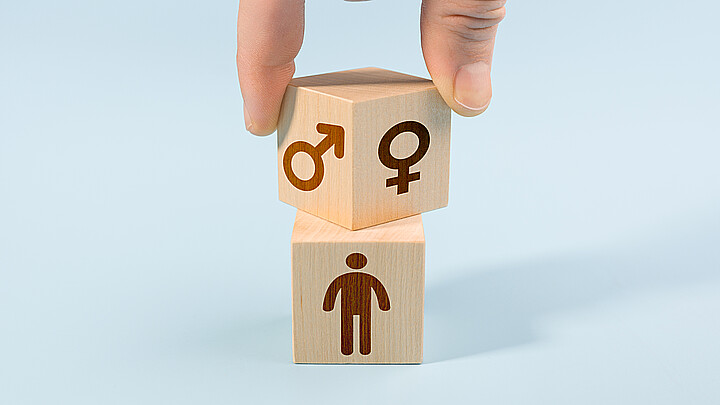Education
From academics to mental health, school shutdowns took heavy toll on students
Black and low-income students were hit the hardest.
October 27, 2021 11:26pm
Updated: October 28, 2021 5:38pm
Even as progressive school boards, teachers' unions, and Virginia Democratic gubernatorial candidate Terry McAuliffe seem to turn a deaf ear to parents' input about their children's schooling, major reports have revealed heavy losses suffered by children nationwide as a result of school district pandemic policies over the last year and a half.
As "two weeks to slow the spread" of COVID-19 in March 2020 turned inexorably into a forever "war" to eliminate the virus entirely, governors shut down their states and schools shut their doors indefinitely, leaving school districts across the country to scramble to provide improvised virtual learning alternatives. It is now clear that more than a year of little to no in-person instruction exacted a steep price — academic, social and emotional — among K-12 students.
The long-term consequences could last into children's adulthoods — not just impacting their job prospects but even negatively impacting the U.S. economy, a report published by McKinsey & Company found.
School shutdowns left K–12 students on average five months behind in mathematics and four months behind in reading by the end of the 2020-2021 school year, the analysis found.
The report evaluated more than 1.6 million elementary school students in more than 40 states, using several key metrics.
Historically disadvantaged students were hit hardest. In math, students in majority black schools ended the year with six months of unfinished learning, students in low-income schools with seven, the report found. High school students were more likely to drop out of school, and high school seniors, especially among low-income families, were less likely to attend postsecondary education, according to the report.
Of the 16,000 parents McKinsey surveyed, 35% said they were very or extremely concerned about their children's mental health. A year of virtual learning, isolation from their friends, and inability to engage in social and athletic activities took a marked psychological toll on their children's wellbeing.
Nearly 80% of parents surveyed indicated "some level of concern about their child's mental health or social and emotional health and development." Parents reported a 5 percentage point increase in anxiety among their children, a 6 percentage point rise in clinical-level depression, as well as significant increases in social withdrawal, self-isolation, lethargy, and irrational fear.
Schools were initially ordered to shut down to prevent the spread of the coronavirus. Then, as it became clear that children were relatively immune from getting or spreading the virus and saw a nearly 100% survival rate, schools began to reopen. However, teachers' unions continued to push for extreme requirements or blocked reopenings, primarily in blue states. By the time the 2020–21 school year began, only 40% of K–12 students were in districts that offered any in-person instruction.
By the end of the year, more than 98% of students had access to some form of in-person learning, from the traditional five days a week to hybrid models, McKinsey and other studies found.
Throughout the year, school districts adapted from virtual, to hybrid, and in-person learning methods. Students faced multiple schedule changes, many were assigned new teachers, and struggled with slow or intermittent Internet connections and "Zoom fatigue."
Students nationwide reported increased failing grades, and parents increasingly pulled their children out of public school altogether. Those who chose to homeschool more than doubled in 2020 compared to the previous year, the Census Bureau found.
A Curriculum Associates analysis found that more first and second graders ended the year two or more grade levels below expectations than in any previous year analyzed. Its report evaluated grade-level placement data and student achievement data for 9 million students nationwide during the 2020–2021 school year.
By spring 2021, fewer students were on grade level than in previous school years, it found, especially in reading, with those in early elementary grades impacted the most. Much the same was true with mathematics, with those in elementary and early middle school grades faring worse.
Some students disengaged from school altogether, slipped backwards, and lost knowledge or skills they once had, McKinsey found. The majority simply learned less than they would have in a typical year, and students who advanced to the next grade level were unprepared and missing key building blocks of knowledge necessary for success.
"And it's not just academic knowledge these students may miss out on," as a result of school shutdowns, the analysis warns. "They are at risk of finishing school without the skills, behaviors, and mindsets to succeed in college or in the workforce. An accurate assessment of the depth and extent of unfinished learning will best enable districts and states to support students in catching up on the learning they missed."
"The ripple effects may undermine their chances of attending college and ultimately finding a fulfilling job that enables them to support a family," the report adds. "Our analysis suggests that, unless steps are taken to address unfinished learning, today's students may earn $49,000 to $61,000 less over their lifetime owing to the impact" of their education being disrupted.
Ultimately, the loss of educational outcomes could negatively impact the U.S. economy between "$128 billion to $188 billion every year as this cohort enters the workforce," McKinsey projects.










